 |
|
Maritime
Lanka |
19 Nov 2003
|
|||
| Last modified: 19 Nov 2003 |
Apart from the major shipwreck sites and the stone anchors, Galle harbour has yielded many individual and lesser artefacts of some historical interest.
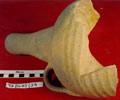 Ceramic shard 93/GHJ/34 |
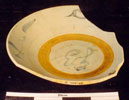 Ceramic shard 93/GHJ/147 |
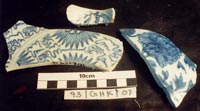 Ceramic shards, 93/GHK/07 |
An enormous variety of 'Indian ocean ceramics' bears witness to trade visitors from many countries. A Longquan celadon bowl and part of a bowl base have been dated to the Song dynasty, 12th-13th century. These and other shards from the Yuan dynasty represent luxury items. The later expansion of lower grade 'trade ware' is witnessed by a huge number of fragments.
Nineteenth century soda bottles have become collectors' items. The torpedo-shape bottle on the left is 'Hamilton Patent', and bears the details of a London manufacturer.
A sounding lead was a weight lowered on a rope to test the depth of water. The lower end is cup-shaped, to accommodate a tallow (grease) to collect a sample of the seabed and show the nature of the bottom sediments. Sounding leads must have been among the earliest navigational aids. Several have been found in Galle harbour, of unknown antiquity.
Many clay pipes have been discovered, both Dutch and British, and parts of a hookah. The Dutch pipes have been dated between the third quarter of the 17th century and the late 18th/early 19th; late 18th is probable, as the British took over in 1796, and there was less Dutch shipping in the harbour thereafter. The British pipe bowl is similar to Bristol clay pipes of the second half of the 19th century; it was found at Site A. The British ship SS Rangoon was wrecked at Galle in 1865.
The hookah bowl fragments are of Middle Eastern or Indian origin, broadly dated to the 14th-19th centuries, and may have been left by the Moslem merchants and mariners who frequented Galle port before the arrival of the Europeans - although they could also have been acquired by hookah-smoking Europeans. Trading colonies of Malabari Moors in particular, and Moslems from the Red Sea and Persian Gulf, were recorded from about the 10th century in the southern and south-western ports of Sri Lanka; Ibn Battuta recorded his visit to Galle in the mid 14th century. Descendants of these Moslem traders remain prominent today in towns such as Beruwela, Galle, Weligama and Devundara.
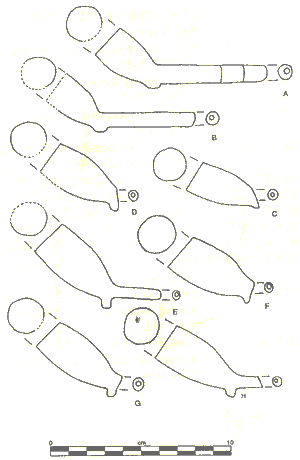 Fig.1: Dutch pipes
Fig.1: Dutch pipes
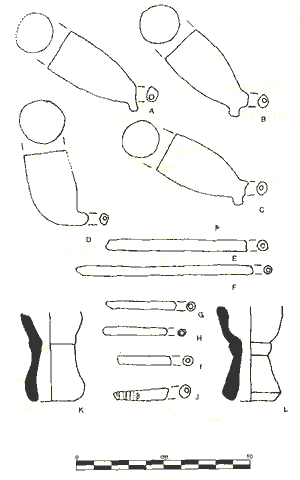 Fig
2: Dutch & British pipes
Fig
2: Dutch & British pipes| Maritime Lanka homepage | Nooit Gedacht |